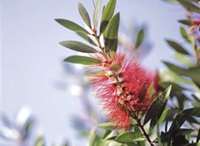
More than 600, 000 farms and roughly 31m hectares of land – 0.7% of the world’s agricultural land – are dedicated to organic farming. Seven of the world’s top 10 countries for organic faming, in terms of the percentage of total agricultural land used, can be found in the EU, according to the World of Organic Agriculture 2007, published by the German Foundation Ecology & Agriculture (SÖL). In the US, organic production accounts for 3-5% of food production, with a total of 81,000ha given over to the cultivation of organic fruit and vegetables, according to Michael Braverman, from Rutgers University, Princeton, New Jersey.
Speaking at the fall meeting of the American Chemical Society in Washington DC, Braverman said that conventional farmers are now producing organic crops on a larger scale than traditional organic producers. The average organic farm size has increased, he pointed out, and farmers are not relying on traditional organic pest management approaches because of their heavy reliance on manual labour.
Biowarfare on the farm

Consumer quality expectations – that organic produce should be equal to conventionally grown crops – have also had an impact on pest management level requirements. The emphasis has changed from pest suppression to pest control, said Braverman. As the numbers of farms involved in large-scale organic production increase, then so will demands for pest management based on organically approved pesticides. According to the US Organic Farming Research Foundation, the number of certified US organic producers has been growing at 20%/year since 1994, with sales of organic produce – the fastest growing sector in US agriculture - up by at least 20%/year.
However, the actual numbers are still comparatively small, Braverman pointed out, adding that the primary target of bio-based pesticides will still be conventional farming. Even conventional agchem producers are now looking at biological pesticides, Duke pointed out, as a result of EU regulations that have eliminated wide ranges of synthetic products.
Biological pesticides are derived from natural products including animals, plants, bacteria and certain minerals. In the group used as herbicides, Duke includes essential plant oils, vinegar, and natural lipids and soaps that are used in both refined forms as well as crude botanical preparations, such as cinnamon bark and corn gluten. Most provide only non-selective weed control, he said, adding that compared with conventional products, the amount of material required is generally orders of magnitude higher than for synthetic selective herbicides, making them an expensive option.
The activity of corn gluten, for example, is believed to be due to its five dipeptides and one pentapeptide, said Duke, however, its exact mechanism of action is so far unknown and around 330kg/ha is needed to have an effect. It is also sold as a soil enhancer, Duke added, and ‘it is still cheaper than essential oils’.
Acetic and pelargonic acids are used as so-called ‘burn-down herbicides‘, with the fatty acid, pelargonic acid being the most effective, and produced as Scythe herbicide in the US by Mycogen, according to Duke. Effective for the control of annual weeds and grasses, and for top kill of perennial species, it acts by penetrating green plant tissue, and disrupting normal membrane permeability and cellular physiology. The disruption of the cell membrane results in cell leakage and death of all contacted tissues.
‘Weed management tends to be the most difficult part of organic farming,’ said Duke. He pointed out, however, that there are some compounds with a molecular target site, such as leptospermone, derived from the Bottle Brush plant (Callistemon spp). Its activity was discovered by the former UK chemical major ICI and has formed the basis of synthetic herbicide development. He also highlighted β-triketones, including leptospermone, grandflorone and flavesone, isolated from oil extracted from Manuka (Leptospermum Scoparium), which inhibit the enzyme 4-HPPD (4-hydroxyphenylpyruvate- dioxygenase), an enzyme involved in the synthesis of carotenoids. Grandiflorone is the most efficacious of the three ketones, and is almost as effective as synthetic products, said Duke, ‘but again an expensive alternative’.
Biowarfare on the farm (continued)
Fermentation products offer good promise, said Duke. Bialaphos, a product of Streptomyces hygroscopicus, is said to be the first fermentation herbicide to be developed and registered 25 years ago. It is a tripeptide, composed of alanylalanine and phosphinothricin, which is the herbicidal equivalent of a prodrug that is bioconverted into glufosinate enantiomer to inhibit glutamine synthetase. Duke also mentioned tentoxin, a cyclic tetrapeptide produced by the phytopathogenic fungus Alternaria alternate, which selectively induces chlorosis, or yellowing and death of leaves due to insufficient chlorophyll. Although tentoxin has good soil activity for corn and soybean, Duke noted its high cost: $200/mg.
Highlighting the potential of fermented fungal herbicides, Duke picked out ascaulitoxin aglycone as offering potential for development. Produced by Ascochyta caulin, it has shown good activity at low concentration on duckweed, for example, performing more effectively than synthetic alternatives.
Benzoxazinoids, produced as cut rye grass decomposes, has also been shown to have a herbicidal effect, according to John Lydon, from the Sustainable Agricultural Systems Laboratory in Beltsville, Maryland, which is also part of the USDARS. As a result of experiments in which the rye grass was either cut and then hoed into the soil or just left as a mulch, Lydon said there was very little difference in the herbicidal effect, which in both cases decreased to background levels within 14 days. His conclusion was that it was likely to be a synergistic effect but further research is required.
In addition to herbicidal effects, natural products can also be effective against insect and mite pests. Murray Isman, from the Faculty of Land & Food Systems at the University of British Colombia, Canada, pointed out that there is a ‘limited arsenal’ of pest management products available, although certain plant essential oils, including mints, thyme, rosemary, clove and citrus, have a broad spectrum of activity that can be exploited for integrated pest management.
In 1996, the US Environmental Protection Agency (EPA) drew up a list of so-called exempted actives that can also be described as ‘reduced risk’ insecticides, including 1,8-cineole from rosemary; eugenol from clove; cinnamaldehyde from cinnamon, citronellal and citral from lemongrass; and menthol from mint.
Isman emphasised that criteria for essentialoil based insecticides were also set over a decade ago by the US Food & Drug Administration (FDA), but approval by Organic Materials Review Institute (OMRI) is now considered at least as important. OMRI is a not-for-profit organisation and the products that it approves may be used on operations that are certified as organic under the US Department of Agriculture’s National Organic Program.
Isman noted that essential oils are already in use as ‘reduced risk’ insecticides, for example, in animal production such as their use for fly control in organic diary operations.
Besides their application as insecticides, rosemary and thyme have also been shown to have useful prophylactic activity against pathogenic fungi such as powdery mildew, said Isman, while clove and citrus are sufficiently phytotoxic at appropriate concentrations that they can be used as herbicides, with few competing products.
In addition to the use of natural products as pesticides, Isman also suggested that there is strong anecdotal evidence they could be acting as behaviour modifiers, for example, as deterrents or repellents. He is currently investigating the potential of essential oils and their constituents as repellents and deterrents against two-spotted spider mites and other pests.





